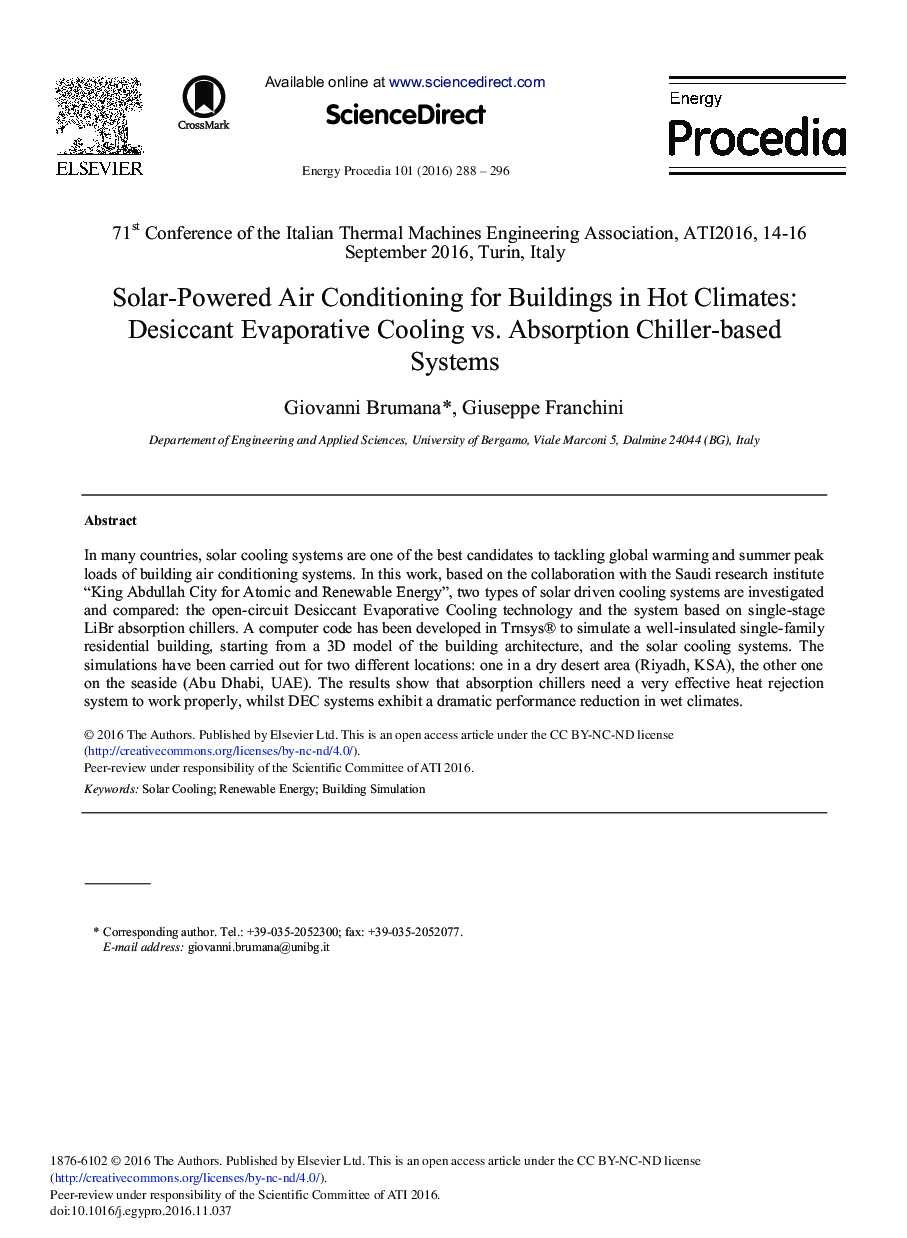| Article ID | Journal | Published Year | Pages | File Type |
|---|---|---|---|---|
| 5446465 | Energy Procedia | 2016 | 9 Pages |
Abstract
In many countries, solar cooling systems are one of the best candidates to tackling global warming and summer peak loads of building air conditioning systems. In this work, based on the collaboration with the Saudi research institute “King Abdullah City for Atomic and Renewable Energy”, two types of solar driven cooling systems are investigated and compared: the open-circuit Desiccant Evaporative Cooling technology and the system based on single-stage LiBr absorption chillers. A computer code has been developed in Trnsys® to simulate a well-insulated single-family residential building, starting from a 3D model of the building architecture, and the solar cooling systems. The simulations have been carried out for two different locations: one in a dry desert area (Riyadh, KSA), the other one on the seaside (Abu Dhabi, UAE). The results show that absorption chillers need a very effective heat rejection system to work properly, whilst DEC systems exhibit a dramatic performance reduction in wet climates.
Related Topics
Physical Sciences and Engineering
Energy
Energy (General)
Authors
Giovanni Brumana, Giuseppe Franchini,
